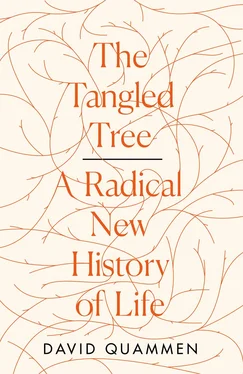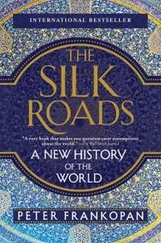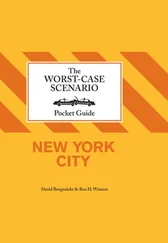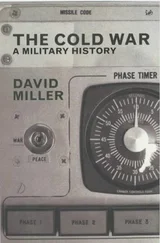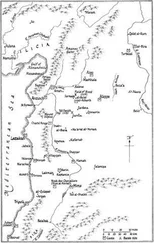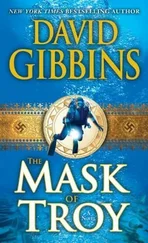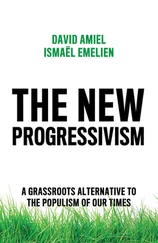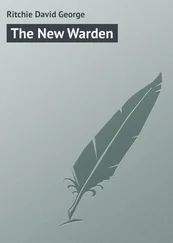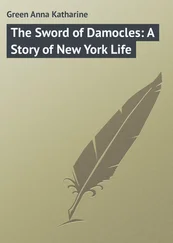It was a risky proposition. But he was twenty-seven years old and deeply changed by what he had seen and, in a quiet way, very gutsy.
So he had set himself up in the big city, with lodgings on Great Marlborough Street, a convenient location for his visits to the British Museum. This was just a few doors down from the house where his elder brother, Erasmus, had already settled. Darwin joined scientific clubs, the Geological Society, the Zoological Society, but had no job. Didn’t need one. The same formidable father who had first disapproved of the Beagle voyage—Dr. Robert Darwin, a wealthy physician up in the town of Shrewsbury—was now rather proud of his second son, the young naturalist well regarded within British scientific circles. Grumpy on the outside, generous within, Dr. Darwin had made supportive arrangements for both brothers. And Charles was single. He sauntered around London, he handled follow-up tasks on his specimens from the voyage, he worked on rewriting his Beagle diary into a travel book, and—very privately—he ruminated about that radical alternative to special creation. He read widely, scribbling facts and phrases into various notebooks. The “A” notebook was devoted to geology. The B notebook was first of a series on what, to himself only, he called “transmutation.” You can guess what that meant. Darwin had begun thinking his way toward a theory of evolution.
He opened the B notebook, in July 1837, with a few phrases alluding to a book titled Zoonomia; or the Laws of Organic Life , published decades earlier by his own grandfather, another Erasmus Darwin. Zoonomia was a medical treatise (Erasmus was a physician), but it contained some provocative musings that sounded vaguely evolutionary. All warm-blooded animals “ have arisen from one living filament,” according to Zoonomia , and they possess “the faculty of continuing to improve” in ways that could be passed down across the generations, “world without end!” Improvement across generations? Heritable change throughout the history of the world? That was contrary to the special-creation hypothesis, but not too surprising from a gouty, libidinous freethinker and sometime poet such as old Erasmus. Darwin had read Zoonomia during his student days and shown little sign of giving his grandfather’s daring ideas much credit. But now, on revisiting, he took them as a point of departure. Page one, entry one, in the B notebook: his grandfather’s title, Zoonomia , followed by reading notes.
Then again, those wild suggestions didn’t lead anywhere. Erasmus Darwin had offered no material mechanism for “the faculty of continuing to improve,” and a material mechanism was what young Charles wanted, though he may not have fully realized that yet. As reflected in the B notebook, he now went from his grandfather’s work to other readings, other speculations and questions, jotting down clipped phrases, often in bad grammar and punctuation. He wasn’t writing to publish. These were messages to himself.
“ Why is life short,” he asked, omitting the question mark in his haste. Why is reproduction so important? Why do animals of a given kind tend to be constant in form across an entire country but to differ at least slightly on separate islands? He remembered the giant tortoises on the Galápagos, where his stopover had lasted only thirty-five days but catalyzed an upheaval in his thinking. He remembered the mockingbirds too. And why had he seen two distinct kinds of “ostriches” (his label for big, flightless birds now known as rheas) on the Argentine Pampas, one living north of the Rio Negro, one south of it? Did creatures somehow become different when isolated? Put a pair of cats on an island, let them breed and inbreed there for generations, with a little pressure from enemies, and “who will dare say what result,” Darwin wrote. He dared. The descendants might come to look different from other cats, might they not? He wanted to understand why.
Another important question: “Each species changes. does it progress.” Do the cats become better cats, or at least better cats for catting on that particular island? If so, how long would it take? How far would it go? What are the logical limits, if “every successive animal is branching upwards” and with “different types of organization improving,” new forms arising, old forms dying out? That one word, branching , was freighted with interesting implications: of directional growth, of divergence, of an arboreal form. And these questions Darwin asked himself, they applied not just to cats and ostriches but also to armadillos and sloths in Argentina, to marsupials in Australia, to those huge Galápagos tortoises, and to the wolflike Falkland Islands fox, all peculiar in certain ways, all unique to their isolated places, but recognizably similar to their correlatives—other cats and tortoises and foxes, etcetera—elsewhere. Darwin had seen a lot. He was an acutely observant and reflective young man. He sensed that he had seen patterns, not just particulars. It almost seemed, he wrote, that there was a “law of adaptation” at work.
All this and more, facts and speculations, crammed into the first twenty-one pages of notebook B. The pages are mostly undated, so we can’t know how many days or weeks passed in the opening burst of effort. Anyway, he didn’t yet have his theory. Big ideas were coming at him like diving owls. He needed some order as much as he needed the jumble of tantalizing clues. Maybe he needed a metaphor. Then, on the bottom of page 21, Darwin wrote: “ organized beings represent a tree.”
2

We don’t know whether Darwin sat back after writing that statement and breathed deep with a new sense of clarity, but he might have. And he was entitled.
Then he scribbled on. The tree is “irregularly branched,”he told the B notebook, “some branches far more branched.” Each branch diverges into smaller branches, he wrote, and then twigs, “Hence Genera,” the next higher category above species, which would be the twiglets or terminal buds. Some buds die away without yielding further growth—species extinction, end of a line—while new buds appear, somehow. Although the very idea of extinction had once been problematic among naturalists and philosophers, doubted as a possibility or rejected outright on grounds that God’s acts of special creation couldn’t be undone, Darwin recognized that there’s “nothing stranger in death of species” than in death of an individual. In fact, extinction was not just natural but necessary, making space for new species as old ones die away. He wrote: “The tree of life should perhaps be called the coral of life, base of branches dead,” ancestral forms gone. Darwin knew something about coral, having seen reefs at Keeling Atoll in the eastern Indian Ocean and elsewhere during the Beagle voyage. They fascinated him; he concocted a theory of how reefs are formed; and in 1842, five years after this notebook entry, he would publish a book about coral reefs. Coral seemed apt—branching coral, not brain coral or table coral, was what he had in mind—because the lower limbs and base are lifeless calcitic skeleton, left behind like extinct forms of ancient lineages as the soft polyps advance upward like living species. But even he seems to have sensed that “the coral of life” didn’t have the same memorable ring. He drew a feeble pen sketch, on page 26 in the B notebook, of a three-branched coral of life, with dotted lines depicting the inanimate lower sections. And then he let the coral idea slide, abandoning that metaphor.
Читать дальше
